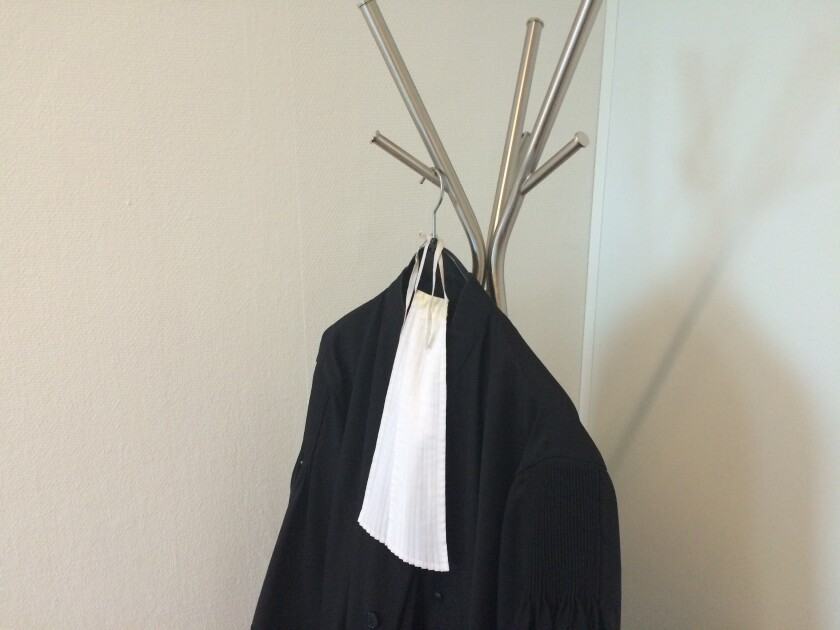I have been blessed, although some may argue otherwise, with representing five different clients in six cases currently pending before the Court of Justice of the EU (CJEU) General Court. Having recently won my first inter partes case there, this felt like a good time to share some insights regarding appeals in trademark cases, from the EUIPO Boards of Appeal (BoA) to the General Court.
Two and a half appeals – as a matter of right
The EU trademark (EUTM) system has a first instance across various divisions of the EUIPO:
The Examination Division renders decisions on lack of distinctiveness and other “absolute hindrances”;
The Opposition Division renders decisions on oppositions based on prior registered trademark rights and other “relative hindrances”;
The Cancellation Division renders decisions of first instance regarding revocations and invalidity proceedings.
Decisions from all three divisions can be appealed as a matter of right to the BoA.
Decisions of the BoA can be appealed as a matter of right to the General Court. There used to be a further appeal, as a matter of right, to the CJEU in Luxembourg, which is the EU equivalent of the US Supreme Court (SCOTUS), but this is only permitted now if the issue raised is “significant with respect to the unity, consistency or development of European Union law”. Much like the ‘cert. denied’ feature of SCOTUS, it is quite rare for the CJEU to take an appeal in an EUTM case from the General Court.
While the procedure is taking place, an EUTM application met with an absolute or relative hindrance is still not dead. Each stage of the appellate procedure can take between one and two years so it is not unusual for an appeal to take between five and ten. In fact, some cases go up and down the appellate ladder several times, taking decades before a final decision is reached.
What are the chances of success for EUTM appeals to the General Court?
A database statistical analysis of trademark decisions by the General Court in the period January 2020 through August 2025 gives the following approximate percentages:
Outcome | All decisions | Distinctiveness | Prior rights | Bad faith |
Confirmed | 82% | 87% | 80% | 75% |
Annulled | 13% | 8% | 13% | 25% |
Partially annulled | 5% | 5% | 7% | 0% |
So, the appellant’s chances of success on appeal to the General Court are limited, particularly for proceedings regarding distinctiveness (both examination and invalidity decisions). However, that does not mean it is hopeless, especially with regard to bad faith.
Practicalities: deadlines, evidence, and arguments
Appeals to the General Court are subject to a non-extendable deadline of two months from the notification of the BoA decision. This notification is considered to be ten days after the date of the decision.
The appeal to the General Court must be fully substantiated within the appeal, in contrast to the first BoA appeal, which can be substantiated two months after lodging the appeal.
It is not generally possible to file further evidence on appeal before the General Court, again in contrast to the BoA, where it is possible to file “additional” evidence (but not primary evidence).
The General Court has its own Rules of Procedure of the General Court, which are quite strict and relate to everything from fonts to the number of pages and the pagination of annexes. Just as important are the Practice Rules for the Implementation of the Rules of Procedure of the General Court.
The compulsory platform for attorneys: e-Curia
Since 2018, attorneys representing clients before the General Court must use the e-Curia platform for lodging and exchanging legal documents between parties and the General Court. The platform is relatively fit for purpose, and there is adequate support during regular business hours.
There is an emergency procedure to allow EU-based attorneys access to e-Curia to meet an appellate deadline, but it is highly recommended to obtain access to the platform well in advance of any deadlines to ensure smooth lodging.
Hearing before the General Court in Luxembourg
There is a mandatory written part of the proceedings and an optional oral part, in the form of a hearing. Once the pleadings have been exchanged, the appellant or defendant (but not an intervener) may request a hearing within the three-week deadline specified by the General Court, detailing the reasons that party wishes to be heard. It is my experience that timely requests for a hearing are usually granted.
I consider the questions from the General Court to be the most exciting part of the hearing but also the hardest to prepare for
If the request is granted, a hearing is scheduled to be held at the General Court in Luxembourg, with notice of at least one month. This can only be rescheduled in “exceptional circumstances”. A summary report is circulated to the parties approximately three weeks before the hearing. It is not uncommon for the court to ask the parties to use the hearing to focus on a particular issue or to comment on the relevance, for the instant case, of a recent decision by the court.
The hearing is held in person in Luxembourg at the General Court, typically at 09:30, but this is not guaranteed. Attorneys must also wear a gown, and it is possible to borrow a gown if you do not own one, but please note that the selection and sizes are limited.
The hearing may be translated, depending on the composition of the court, so there are typically translators in attendance. It can be a good idea to prepare a copy of one’s notes for the translators, so that they can anticipate what you are about to say, as this may improve the accuracy and nuance of any translations.
The hearing is in three parts:
Each main party has 15 minutes to present their case, and to address any particular points raised by the General Court. An intervener has 10 minutes.
Each party can then rebut the opposing party’s arguments.
Finally, there are questions from the General Court, which often take around 10–15 minutes but may take longer.
Depending on the number of parties present, the whole hearing may only take an hour or two, and on the rare occasions that the hearing is scheduled for the afternoon slot, it can even be possible to fly in and fly out the same day. Perhaps because it can be so quick and intense, prior to the start of the hearing the parties are invited ‘backstage’ into an ante room, where everyone greets one another. The president explains, somewhat informally, the conduct of the hearing, and asks the parties whether they have any comments on the summary report. I am typically impressed by the cogent summary and take the opportunity to praise the rapporteur for doing a balanced job.
I consider the questions from the General Court to be the most exciting part of the hearing but also the hardest to prepare for. It is typically evident that all members of the court, and particularly the rapporteur, have a thorough knowledge of both the pleadings of the parties, as well as the relevant legislative provisions and associated leading case law. This often results in a very intense yet intellectually stimulating dialogue.
Costs of appealing to the General Court
There are no official fees when lodging an appeal from a BoA decision to the General Court. In a way, the page restrictions also help to keep costs down, although to be successful it is prudent to use the limited space wisely, and extensive effort goes into crafting a cogent appellate brief for the General Court.
There is a general rule that the unsuccessful party bears the reasonable costs of the successful party. If the unsuccessful party refuses to pay, or finds the demanded costs too expensive, the General Court will render a decision in this regard. In such cases, the successful party’s costs must be “manifestly excessive” for them to be set aside. Note that if there is no hearing in a case where the EUIPO is the sole defendant (no intervener), then there are typically no costs awarded.
Final thoughts on appealing EUIPO decisions
Statistically, the chances of success for an EUTM or EU registered design appeal to the General Court are low, but the cost of appealing to the General Court does not have to be prohibitive, particularly if no hearing is held. So, if a trademark owner feels the EUIPO BoA really did err in law, then it can be worth a shot to appeal to the General Court.











